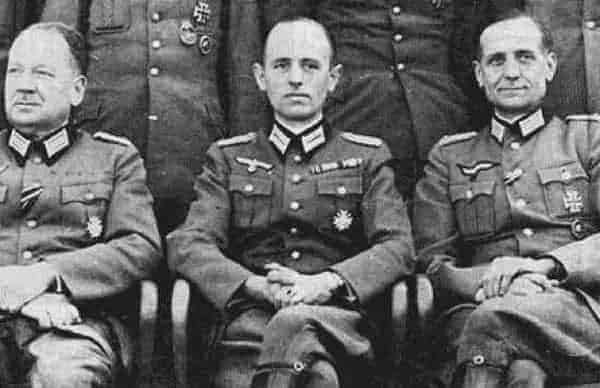As World War II drew to an end in Europe, American military planners looked ahead to other conflicts. One was the ongoing war with the Japanese in the Pacific. The other was the growing intransigence of the Russians. Throughout the war the United States, through Lend-Lease, had provided the Soviet Union with all of the necessities of keeping their massive armies in the field. But there had been little coordinated military action and a great deal of distrust simmered between the Allies. It was quickly clear that the Soviets had little intention of surrendering any of the gains they had acquired in Eastern and Central Europe.
The United States was on the verge of detonating an atomic bomb. It was a given among American leaders that the Germans had been working on an atomic weapon of their own. The Germans had demonstrated advances in jet propulsion, rocketry, guided weapons, chemistry, and much more. Any of the scientists, technicians, engineers, and others who fell into the hands of the Soviets would take knowledge with them which would give the Soviets an edge over the United States. Any of the knowledge which came to the US would give that edge to the Americans, as regarded the USSR and Japan.

Hundreds of Germans who had worked to defeat the Allies in the war were brought to the United States and put to work on top secret projects. It was called Operation Paperclip.

The Soviets aggressively recruited many of the same people as the United States
Relations between the United States and the USSR rapidly deteriorated in the weeks following the fall of Berlin. Despite agreements reached at Yalta and later at Potsdam, Soviet troops and agents began to seal off the areas held by their forces. English, French, American, and Soviet agents searched for former Nazi leaders, military leaders, industrialists, scientists, and other persons of interest. Despite security which had prevented even President Truman from being aware of the atomic bomb before taking office, the Soviets, through their spy network, were well aware of American progress.
The Russians were interested in the technology developed around the V-1 and V-2 rockets, rocket propelled aircraft, anti-aircraft missiles, and other advances made by the Germans at the Luftwaffe’s central testing facility and at Mittelwerk Nordhausen, which had been transferred to the Soviet Zone of control in July 1945. Aware of the American’s interest in recruiting the same personnel, the Russians decided to use more forceful means of persuasion to recruit workers.
On the night of October 22 1946, agents of the NKVD, a predecessor of the KGB, and armed Soviet troops rounded up more than 2,000 German specialists and their families, between midnight and three in the morning, at gunpoint. At the same time teams of Soviet technicians gathered material including intact missiles, rockets, aircraft, support equipment, technical manuals and drawings, reports, and anything of significance.
The Germans and their equipment were transported by train to the Soviet Union, where the specialists were offered contracts to work for the Soviets, at pay scales equal to similarly skilled Soviet workers. According to some specialists later released by the Soviets, there was no choice but to sign the contracts, as it was made clear that they would not be returned to Germany.
Over ninety trains were required to transport the Germans, their families, their belongings, and their work materials. Some German employers tried to block the removal of their workers, arguing that they were needed for the economic rebuilding of the country, those objections were for the most part ignored by the Russians. Zeiss tried to prevent the removal of needed machinery for example, but failed to retain more than 25% of their equipment. The Soviets explained that the operation had been necessary as part of the Allies agreements to eliminate German military facilities.

